- Home
- international
- news
- How Pakistan is playing a big part in the 2022 World Cup
How Pakistan is playing a big part in the 2022 World Cup

The company Bola Gema Pakistan produces 160,000 soccer balls every month.Insider
- Nearly 70% of the world's soccer balls are made in Sialkot, Pakistan.
- Factories in Sialkot produced balls for the 2022 World Cup and sold replicas to fans.
Nearly 70% of the world's soccer balls are made in Sialkot, Pakistan. Factories there produced balls for the 2022 World Cup and sold replicas to fans. Here's how workers put together a soccer ball from start to finish.
Pakistan is playing a big part in the 2022 World Cup, making the balls used on the training fields in Qatar and selling the replicas to fans worldwide.
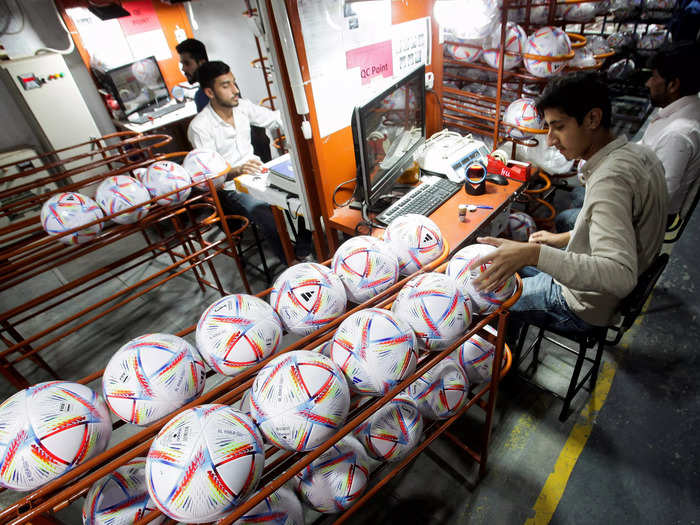
Workers conduct the final check to fix any cavity in the seams of balls inside the soccer ball factory in Sialkot, Pakistan, in December 2022. Mohsin Raza/Reuters
Most of the world's soccer balls are produced in the Sialkot region of Pakistan. This manufacturer, Bola Gema Pakistan, produces 160,000 balls every month.
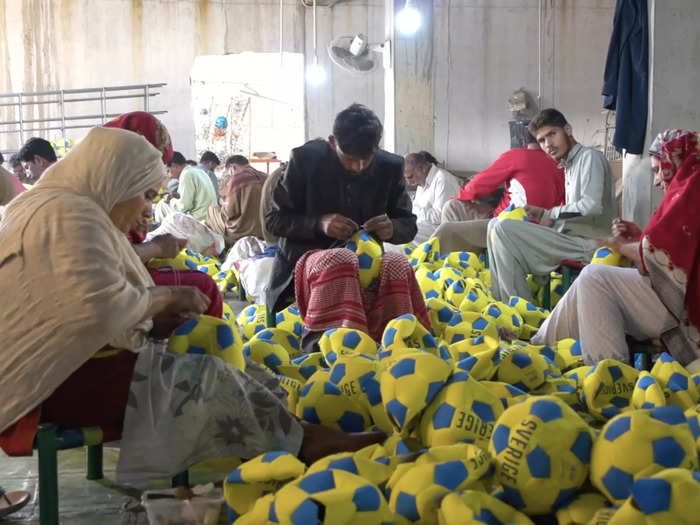
The company Bola Gema Pakistan produces 160,000 balls every month. Insider
This machine creates sheets out of hot rubber and then cuts them into round shapes.
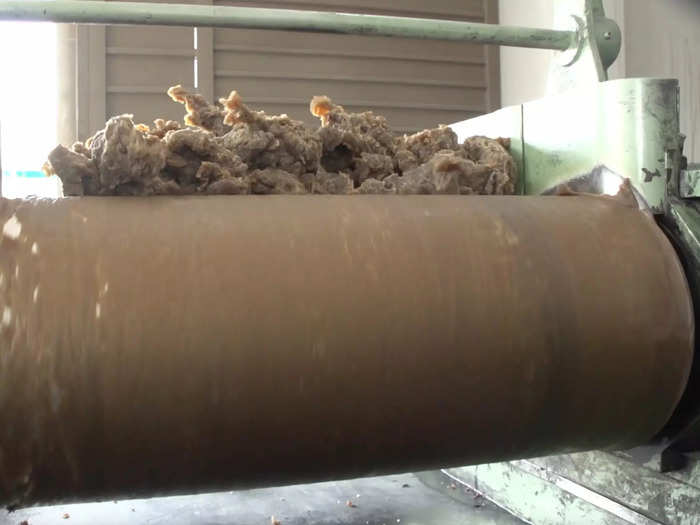
This machine creates sheets out of hot rubber. Insider
Those form the inner linings of the balls.
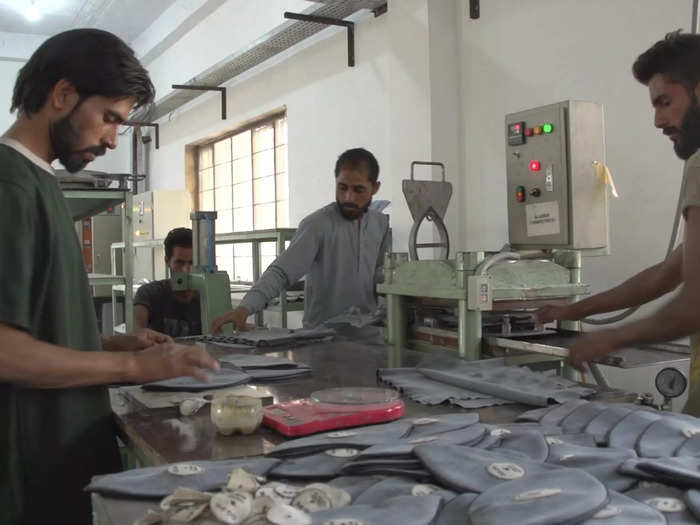
Machine forms inner linings of balls. Insider
After that, a factory worker will inflate the lining.
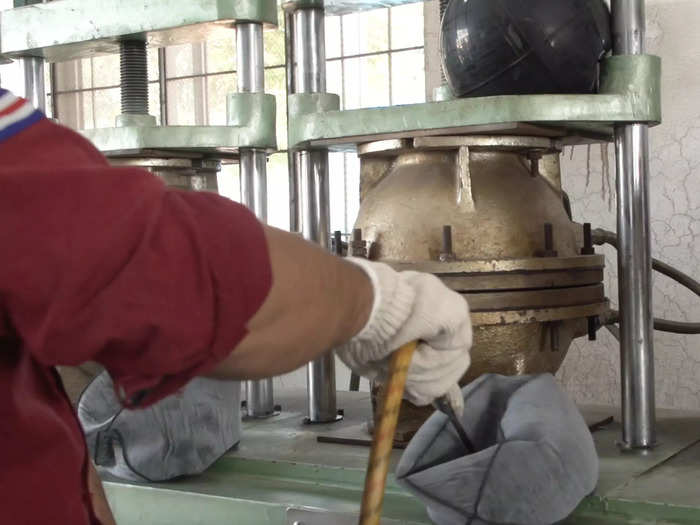
A factory worker inflates the lining of the soccer ball. Insider
Then the worker places the lining into a metal steam machine, where it bakes for a few minutes, hardening the rubber.
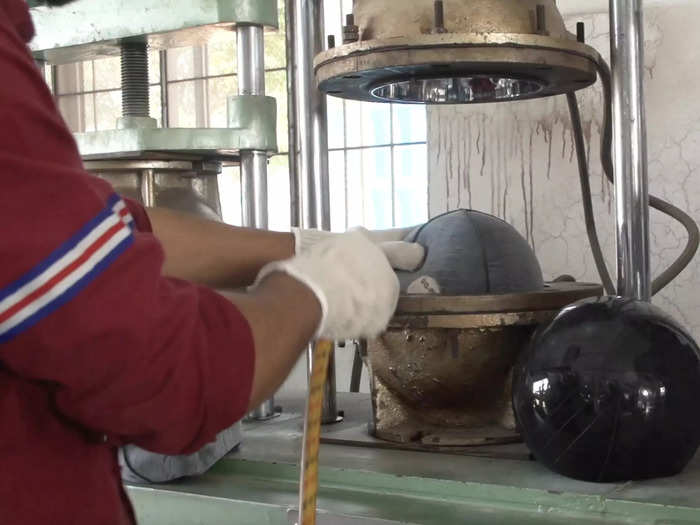
The lining bakes in a metal steam machine. Insider
Workers cut patches for the ball's external shell. Each ball is made up of 20 hexagons and 12 pentagons.

Each ball is made up of 20 hexagons and 12 pentagons. Insider
These workers are using sewing machines to put together soccer balls.
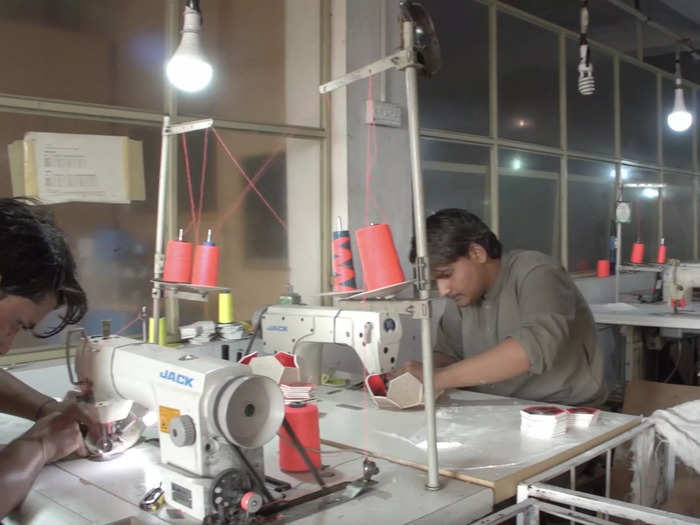
Workers using sewing machines to put together soccer balls. Insider
And this worker is using a thermobonding mechanism to put together a higher-end soccer ball. Balls made through this method have no stitching on the ball.
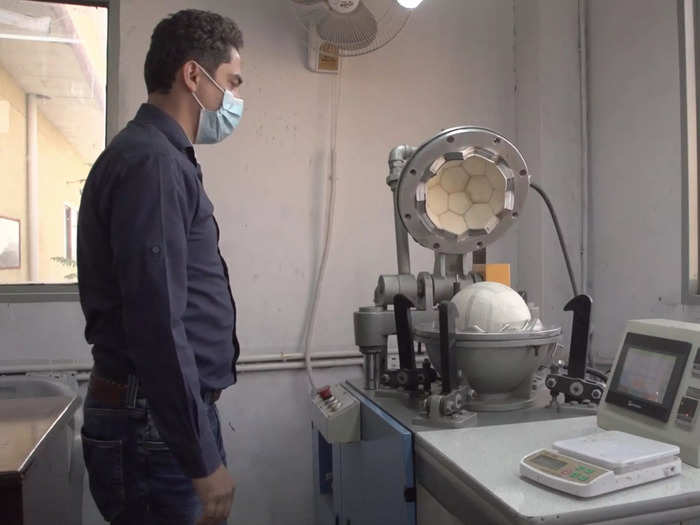
Balls made by thermobonding have no stitching. Insider
He weighs the ball to make sure it falls between 420 and 440 grams. This one weighs 433 grams, the perfect weight for a FIFA-approved soccer ball. A ball like this can cost over $100 in the US.
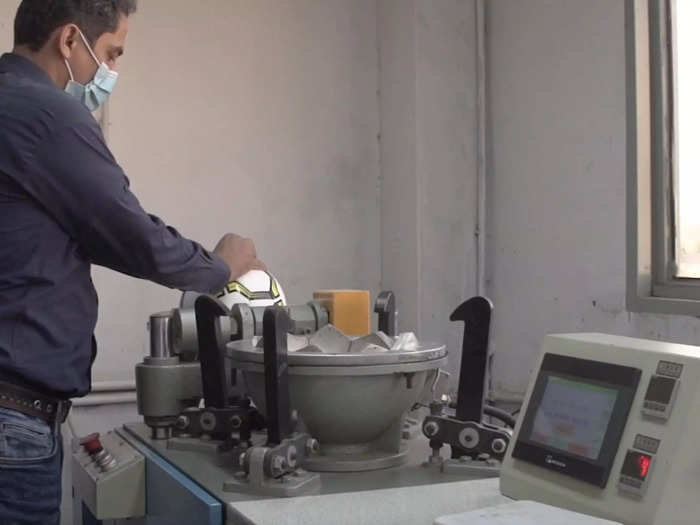
This ball weighs 433 grams. Insider
Before the soccer balls are exported, they go through one last test in this machine. It shoots the ball at least 2,000 times to make sure the stitching stays together, the waxing is still in place, and the ball doesn't lose its shape.
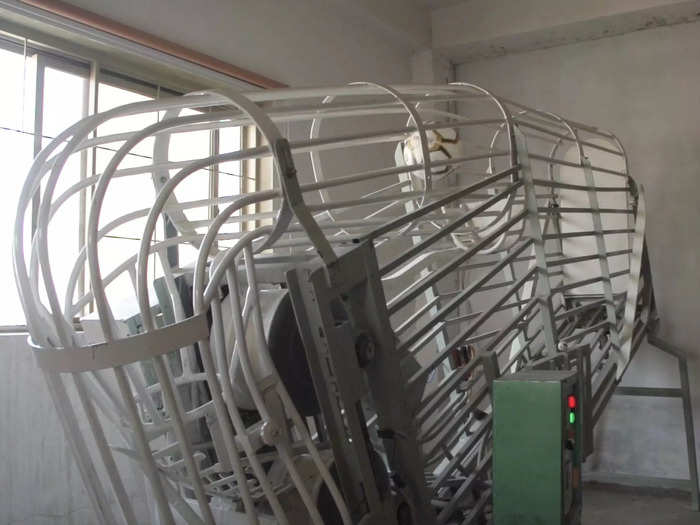
This machine shoots the ball at least 2,000 times. Insider
Then workers use this machine to deflate the balls, getting them ready for shipment all over the world.
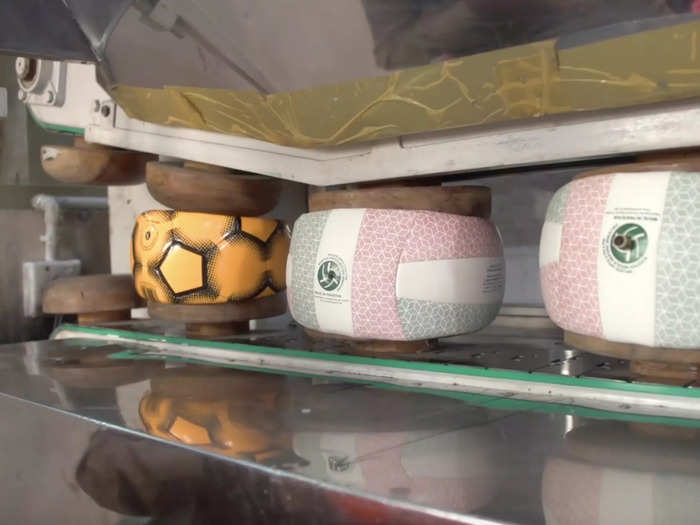
This machine deflates the balls, getting them ready for shipment. Insider
The industry remains a major source of income for people in Pakistan. There are at least 1,000 football factories in Sialkot alone employing nearly 60,000 people.
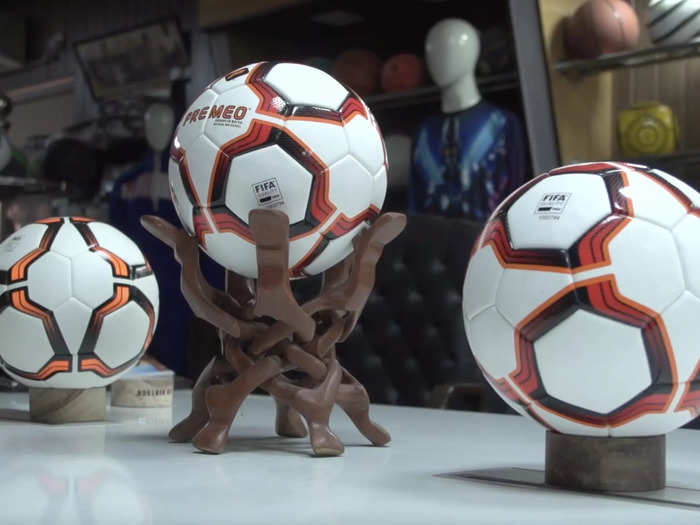
There are at least 1,000 football factories in Sialkot. Insider
Popular Right Now
Advertisement